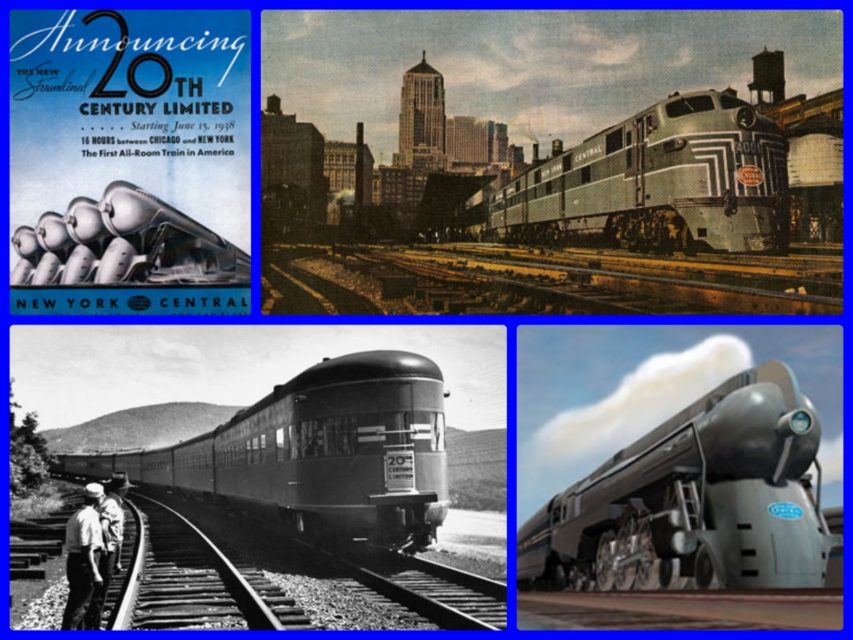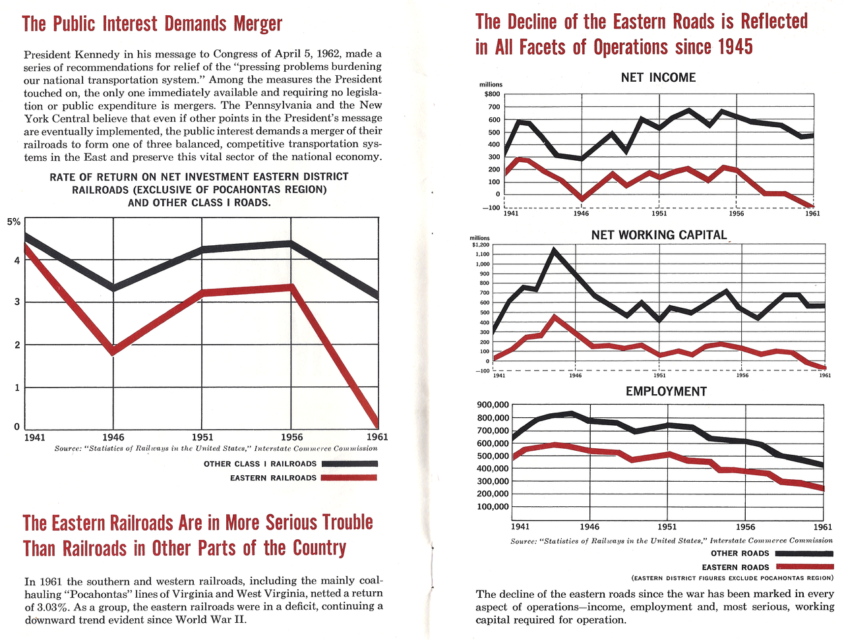
The New York Central System was the largest of the eastern trunk systems from the standpoint of mileage and second only to the Pennsylvania in revenue. It served most of the industrial part of the country, and its freight tonnage was exceeded only by the coal-carrying railroads. In addition it was a major passenger railroad, with perhaps two-thirds the number of passengers as the Pennsylvania, but NYC’s average passenger traveled one-third again as far as Pennsy’s. NYC did not share as fully in the post-World War II prosperity because of rising labor costs, material costs, and an expensive improvement program, especially for passenger service.
During 1946–47 Chesapeake & Ohio purchased a block of NYC stock, becoming the road’s largest stockholder. Robert R. Young gained control of the Central and became its chairman in 1954 as part of a maneuver to merge it with C&O. One of his first acts was to put Alfred E. Perlman in charge of the NYC.
Under Perlman NYC slimmed its physical plant, reducing long stretches of four-track line to two tracks under centralized traffic control, and developed an aggressive freight marketing department. At the same time NYC’s passenger operations were de-emphasized. On December 3, 1967, just before NYC and Pennsy merged, the Central reduced its passenger service to a skeleton, combining its New York–Chicago, New York–Detroit, New York–Toronto, and Boston–Chicago services into a single train and dropping all train names (including that of the legendary 20th Century Limited) except for, curiously, that of the Chicago–Cincinnati James Whitcomb Riley.
The Central’s archrival was the Pennsylvania Railroad. West of Buffalo and Pittsburgh the two systems duplicated each other at almost every major point; east of those cities the two hardly touched. Both had physical plant not being used to capacity (NYC was in better shape); both had a heavy passenger business; neither was earning much money. In 1957 NYC and Pennsy announced merger talks.
The initial industry reaction was utter surprise. Every merger proposal for decades had tried to balance the Central against the Pennsy and create two, three, or four more-or-less-equal systems in the east. Traditionally PRR had been allied with Norfolk & Western and Wabash; NYC with Baltimore & Ohio, Reading, and maybe the Lackawanna; and everyone else swept up with Erie and Nickel Plate. Tradition also favored end-to-end mergers rather than those of parallel roads.
Planning and justifying the merger took nearly ten years, during which time the eastern railroad scene changed radically, in large measure because of the impending merger of NYC and PRR: Erie merged with Lackawanna, C&O acquired control of B&O, and N&W took in Virginian, Wabash, Nickel Plate, Pittsburgh & West Virginia, and Akron, Canton & Youngstown.
Tradition aside, though, the New York Central and the Pennsylvania merged on Feb. 1, 1968 to form Penn Central.







